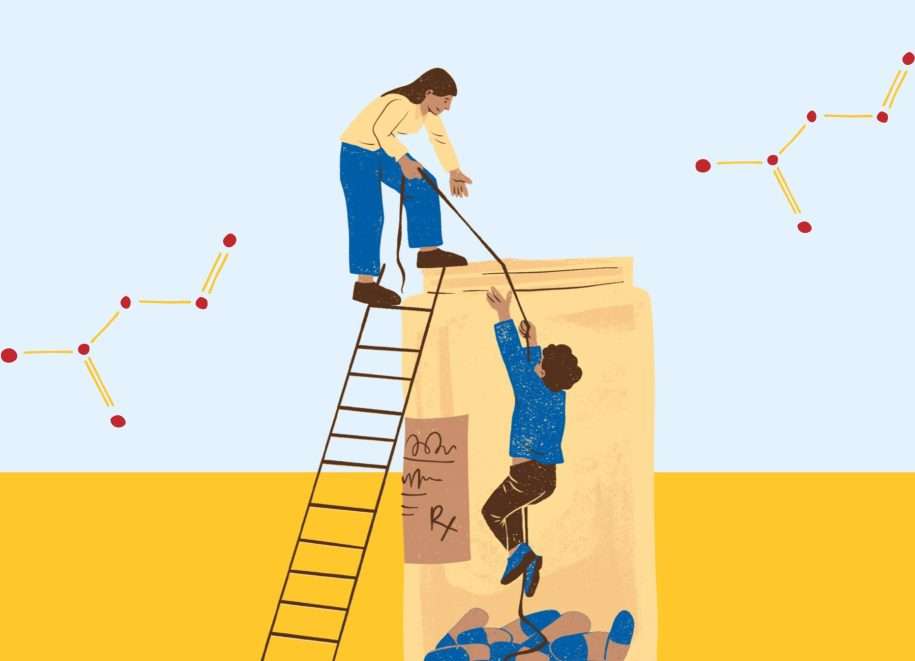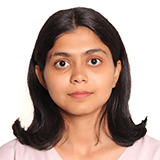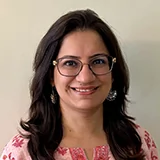Substance use disorder (SUD) is a rapidly growing public health problem in India, with alcohol, cannabis and opioids being the most common psychoactive substances consumed by the 10-75 year age group (NSEPSU, 2018).
Substance use disorder (SUD) or substance abuse is a condition characterized by uncontrolled consumption of a product, such as opioids or other psychoactive substances. The United Nations Sustainable Development Goal (SDG) 3, adopted by all countries in 2015, includes indicators related to mental health and well-being and the prevention and treatment of substance abuse. Under target 3.5, countries committed to “strengthen the prevention and treatment of substance abuse, including narcotic drug abuse and harmful use of alcohol”. However, measurement and monitoring of these targets overlooks questions around the availability of treatment for SUD at the health system level, access to affordable essential medicines, and presence of a robust SUD workforce (involving physicians, including addiction medicine specialists and psychiatrists, addiction counsellors, nurses and midwives, rehabilitation specialists, social workers, law enforcement and criminal justice professionals, and community health workers) and the density and distribution of such workforce.
Bridging the Longstanding Data Gap
Research on this emerging public health issue in India is sparse, primarily due to gaps in data on the magnitude and dynamics of drug use. Recent attempts to bridge this gap include the National Mental Health Survey (NMHS) 2016, followed by the National Survey on Extent and Pattern of Substance Use (NSEPSU) 2018. Alongside covering common mental health disorders, NMHS-1 (2015-16) also provides estimates of substance use disorders due to alcohol, opioids, cannabinoids, inhalants, and prescription drugs for twelve states in India. NSEPSU-1 (2018) provides estimates for eight categories of psychoactive substances across all states and union territories of India. These eight substances are alcohol, cannabis, opioids, cocaine, amphetamine-type stimulants (ATS), sedatives, inhalants and hallucinogens. The second round of both the surveys are underway.
Among states, the prevalence of harmful and dependent use of various substances is higher in the north-eastern states and northern states. For example, the top six states having the highest prevalence of opioid addiction among population aged 10-75 years are Mizoram (6.9%), Nagaland (6.5%), Arunachal Pradesh (5.7%), Punjab (2.8%), Haryana (2.5%), and Delhi (2.3%). Although the proportions are higher in the north-eastern states, in terms of absolute numbers, opioid use is a grave problem in states like Punjab and Haryana.
Both surveys collect data from households and are administered by interviewers. It is likely that this approach suffers from the drawback of underreporting illicit behaviour due to the social desirability bias. Nevertheless, the estimates from the survey provide a much-needed overview of the extent of the substance use disorder across states in India.
Policy Initiatives
The Ministry of Health & Family Welfare (MoHFW) and the Ministry of Social Justice and Empowerment (MoSJE) have introduced several initiatives to combat the issue of drug addiction. The main focus of MoHFW is to provide affordable, accessible and evidence-based treatment for all substance use disorders through government healthcare facilities and to build the capacities of healthcare staff in recognition and management of SUDs. On the other hand, MoSJE has been implementing a scheme of the National Action Plan for Drug Demand Reduction (NAPDDR). Under NAPDDR, financial assistance is provided to state governments for preventive education and awareness generation, human resource capacity building, skill development, vocational training, and livelihood support for ex-drug addicts, as well as to NGOs for running and maintaining rehabilitation centres. To create awareness about the ill effects of substance abuse among the youth, MoSJE has launched Nasha Mukt Bharat Abhiyaan (NMBA) in 272 most vulnerable districts, identified by the Narcotics Control Bureau from the perspective of relatively abundant supply, since August 2020. In February 2023, another 100 districts were included under the NMBA program.
The involvement, roles and responsibilities of the two ministries vary across states. In addition to government sponsored treatment facilities, there are many private drug treatment, de-addiction and rehabilitation centres across states in India. However, there is a lack of information on the range of services and quality of treatment available in these facilities.
Treatment Gap
The NSEPSU-1 (2018) household survey shows two worrying trends:
i) Only about 25% of people who suffer from drug addiction receive treatment
ii) The government general hospital is the most common type of facility where patients receive treatment
These findings suggest that targeted programs by the MoSJE (support to NGOs for establishing Integrated Rehabilitation Services for Addicts – IRCAs) and MoHFW (support to government hospitals for establishing de-addiction centres) may have limited reach in catering to the vast demand. . However, it requires further evaluation as the survey was conducted in 2018 when the drug de-addiction programs of the Government of India were relatively at a nascent stage.
Way Forward
The recent surveys on SUD portray the magnitude of the problem across states in India and identify alarming levels of treatment gaps. However, they fail to provide information on the potential reasons behind the treatment gap. To better understand the treatment gap, one needs to explore both the supply and demand side challenges.
We see three areas for concerted action:
- Map the availability of treatment services for drug addiction across various types of health facilities, including NGO-run rehabilitation centres, district de-addiction centres, outpatient opioid-assisted treatment centres, for-profit or charitable private drug de-addiction-cum-rehabilitation centres, and public health facilities.
- Conduct facility surveys to gather useful data on facility characteristics, infrastructure, financial model, human resources, different types of treatment provided and services offered across various categories of psychoactive substance addiction, and understand treatment preferences of physicians and care providers for different types of substance use at various stages of addiction.
- Capture community and end-user perspectives through a nuanced qualitative investigation to gain insights into treatment demand (or lack thereof) and the mismatch between treatment availability and demand. For example, drug users may prefer to visit outpatient facilities and receive medication at regular intervals instead of being admitted to residential facilities given the stigma associated with them and perceptions about the way drug users are treated at such facilities.
More concerted efforts are needed to understand treatment gaps for substance use disorder, both from a demand (user, family and community) and supply side (facility and care provider). Only then can meaningful treatment alternatives be provided to drug users, which in turn can go a long way towards enabling them to lead a healthier and productive life.
About the Author
Santanu Pramanik is the Research Director at LEAD and oversees the research portfolio across thematic areas and provides methodological inputs and strategic oversight to guide project implementation. A seasoned research leader and statistician, he has nearly two decades of experience in steering large-scale data innovation initiatives.





